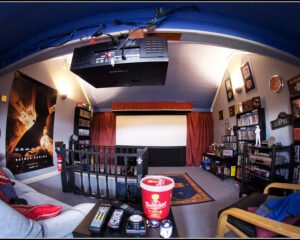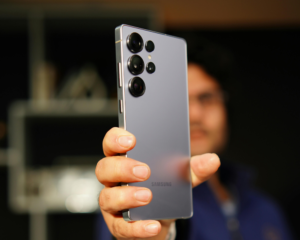In today’s rapidly evolving drone technology landscape, DJI SDR Transmission stands out as a groundbreaking advancement that is reshaping how drones communicate and perform. As drone enthusiasts, content creators, and industrial users continue to demand higher video quality, greater transmission range, and more reliable performance, DJI SDR Transmission has emerged as the solution that meets and exceeds those expectations.
Unlike traditional radio systems, DJI SDR Transmission leverages Software Defined Radio (SDR) technology to intelligently manage signal frequencies and bandwidth, making it far more adaptive and robust in real-world scenarios. Whether you’re flying a drone through a congested city or over remote terrains, this technology ensures stable connections and ultra-low latency video feeds, setting a new benchmark for drone-to-controller communication.
For professionals in filmmaking, search and rescue, infrastructure inspection, and surveying, DJI SDR Transmission offers clear advantages. It delivers crisp, real-time visuals, extends operational range, and resists interference more effectively than older systems. Its implementation in DJI’s latest drones like the Inspire 3 and Mavic 3 Pro Cine further emphasizes its importance in the drone industry.
In this article, we’ll break down how DJI SDR Transmission works, its key benefits, real-world applications, and why it’s becoming the gold standard in drone communication systems.
What Is DJI SDR Transmission?
DJI SDR Transmission is a proprietary communication protocol developed by DJI that uses software-defined radio to dynamically manage and optimize data transmission between a drone and its remote controller. Unlike traditional fixed-frequency radio systems, SDR allows software to manipulate signals on the fly, adapting to interference, range conditions, and bandwidth requirements.
This gives DJI SDR Transmission an edge in delivering ultra-reliable, low-latency, and high-quality video and telemetry feeds—even in complex and noisy environments such as urban landscapes or industrial areas.
How DJI SDR Transmission Works
At its core, DJI SDR Transmission leverages real-time signal processing. Here’s how it functions:
- Adaptive Frequency Selection: The system continuously scans available frequencies to find the clearest channel, reducing the risk of signal dropout.
- Dynamic Bandwidth Management: It adjusts bandwidth usage based on environmental noise and data demand, ensuring efficient transmission.
- Advanced Error Correction: The SDR system can detect and correct errors caused by signal interference, maintaining video clarity and control accuracy.
- Low Latency Encoding: DJI uses advanced video compression and encoding protocols in conjunction with SDR to keep latency below 100 ms, even at 4K resolution.
These features make DJI SDR Transmission one of the most reliable systems in modern drone communication technology.
Key Benefits of DJI SDR Transmission
1. Extended Range
Thanks to adaptive signal processing, DJI SDR Transmission provides significantly longer transmission distances compared to legacy systems. Pilots can fly drones several kilometers away without worrying about losing control or video feed.
2. High-Resolution Video
The system is optimized for high-definition transmission, allowing real-time 1080p or even 4K video feeds with minimal lag. This is critical for filmmakers and inspectors who rely on real-time visuals.
3. Resilience in Harsh Environments
Whether you’re flying in dense urban centers or around metal-rich industrial zones, DJI SDR Transmission adapts to interference and ensures a clean, uninterrupted connection.
4. Multi-Device Support
Some DJI drones equipped with SDR Transmission support multiple controllers or viewers. This is especially useful for collaborative projects like live broadcasting or dual-operator cinematography.
DJI SDR Transmission in DJI Products
The latest high-end DJI drones and remote controllers are built with DJI SDR Transmission technology. Notable examples include:
- DJI Inspire 3 – This flagship drone uses SDR to enable 6K video streaming and long-range transmission, perfect for professional film sets.
- DJI Mavic 3 Pro Cine – Offers cinematic video quality with rock-solid SDR connectivity.
- DJI RC Pro – This controller is designed for high-end drones and integrates SDR for seamless performance, especially in interference-heavy zones.
In each of these cases, DJI SDR Transmission plays a key role in delivering performance, reliability, and flexibility.
Use Cases for DJI SDR Transmission
Aerial Cinematography
Directors and camera operators rely on real-time video feedback. DJI SDR Transmission ensures that what they see is what they capture, making it easier to perfect camera angles and movements on the fly.
Infrastructure Inspection
For teams inspecting power lines, wind turbines, or pipelines, maintaining a solid connection is non-negotiable. SDR tech offers that critical reliability.
Public Safety & Search and Rescue
In emergency situations, dependable signal transmission can save lives. DJI SDR Transmission makes drone deployment faster, safer, and more effective for first responders.
DJI SDR Transmission vs. Traditional Systems
Traditional analog or fixed-band digital transmission systems can’t compete with the flexibility and intelligence of SDR. Here’s how DJI SDR Transmission outperforms the old standards:
| Feature | Traditional Systems | DJI SDR Transmission |
|---|---|---|
| Signal Adaptability | Low | High |
| Interference Resistance | Moderate | Excellent |
| Video Resolution Support | Standard | HD/4K |
| Range | Limited | Extended |
| Error Correction | Basic | Advanced |
Conclusion
In a world where seamless communication between drones and controllers is critical, DJI SDR Transmission emerges as a powerful game-changer. Its intelligent use of Software Defined Radio technology delivers unparalleled signal stability, longer range, and crystal-clear HD video feeds, making it an essential feature in DJI’s next-generation drones. Whether you’re filming a high-stakes commercial, conducting infrastructure inspections, or coordinating search and rescue operations, the precision and reliability offered by DJI SDR Transmission cannot be overstated.
With interference-resistant capabilities, real-time adaptability, and support for ultra-high-resolution video, DJI SDR Transmission ensures that professionals and enthusiasts can fly with confidence in any environment. As drone technology continues to evolve, SDR-based transmission systems like DJI’s are setting the standard for what users expect in performance and reliability.
If you’re considering investing in a professional-grade drone, understanding and choosing models with DJI SDR Transmission will give you a critical edge—both in the air and on the ground. It’s clear that this technology isn’t just a feature; it’s the future of aerial communication.
For more in-depth drone reviews, insights, and tech guides, visit GadgetSyte.com—your trusted source for all things innovation.







